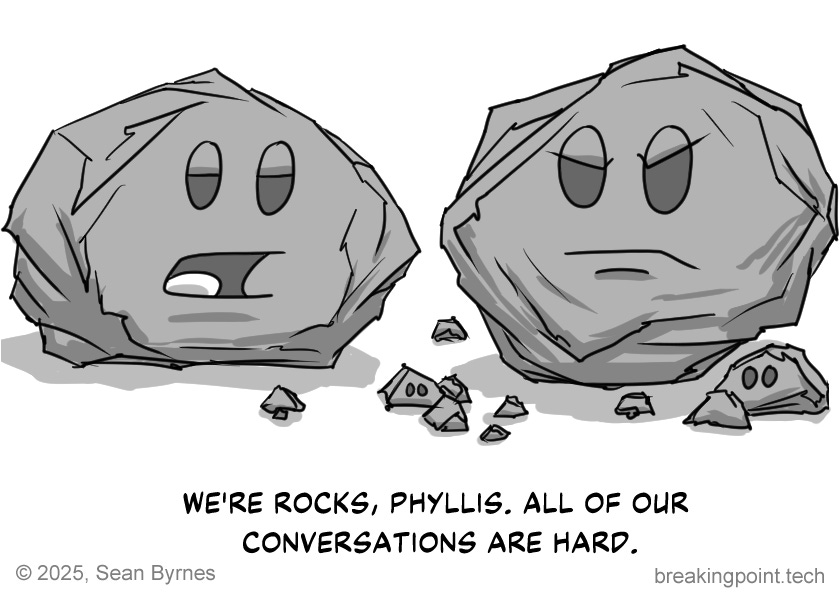Hard Conversations
Hard conversations are hard for everyone, but avoiding them is worse.
If you liked reading this, please click the ❤️ button on this post so more people can discover it on Substack. Thanks!
Every leader has hard conversations. Sometimes it’s delivering harsh feedback to an employee who is under-performing. Sometimes it’s firing someone who just can’t do the job. And sometimes it’s laying off a large group of employees because the business is struggling.
The question is not whether you will have hard conversations, it’s whether you can do them well.
Fortunately, hard conversations are not common. They should be rare if you are managing your team well, but that means you don’t get a lot of practice in having them. As a result, most leaders are bad at hard conversations.
Imagine you are sitting down with an employee to fire them. Here are some bad habits that might sound familiar:
Trying to shift the blame. “I don’t want to do this, but they are making me.” You don’t want to be the bad guy, so you pretend like it was someone else’s decision. In the end, you are a leader and you represent the company so it is your decision. If it wasn’t, you wouldn’t be a leader.
Trying to ease the blow. “We really like you, and you do great work, but we need to let you go.” This sends mixed messages, and leaves the person wondering why they are fired if they do good work?
Pleading ignorance. “I have no idea where this came from.” Of course you know where this came from, pretending otherwise insults everyone’s intelligence.
There are many more of these bad habits and you might have heard them from either side of a hard conversation. At the root cause of all of these is an attempt to make the hard conversation softer. No one likes hard conversations, we all prefer friendly, upbeat conversations.
But, hard conversations need to be hard.
In attempting to soften the blow, you are inadvertently making it worse. By confusing the message or sending mixed signals you leave the person on the receiving end both hurt AND confused. That, in the end, makes it worse.
A much better approach is to be straightforward. The person receiving the bad news is going to have a strong emotional reaction and there is nothing you can do about that. Delivering the hard conversation directly and letting them process is, unfortunately, the best you can do.
Going back to our example of firing someone, you should:
Be clear. “Your employment here is over as of today.”
Be firm. “This decision is final.”
Be thankful. “We appreciate all of your contributions to the company.”
But, that is the best you can do.
Many people think this sounds cold. You should not be a robot, and you should be sensitive to the person’s emotions, but you can only go so far in trying to help them. People get angry about hard conversations and they project that anger onto the people who have them. “You could have done more” even though there is nothing, really, you could do other than not needing the conversation.
Years ago I had an employee that thought it was cruel to have layoffs without informing the people being laid off in advance. If you think about it as a person that makes sense, but when you think about the actual function of the business it would be impossible. Even so, that kind of unrealistic expectation is what you face when people evaluate your hard conversations.
So, don’t try to be the good guy. Don’t try to be the bad guy. Have hard conversations directly, and don’t make it worse by trying to make it better.
After the person has had time to process, there might be a chance for you to help. But that is up to them, not you.
For more on Managing People, see:


